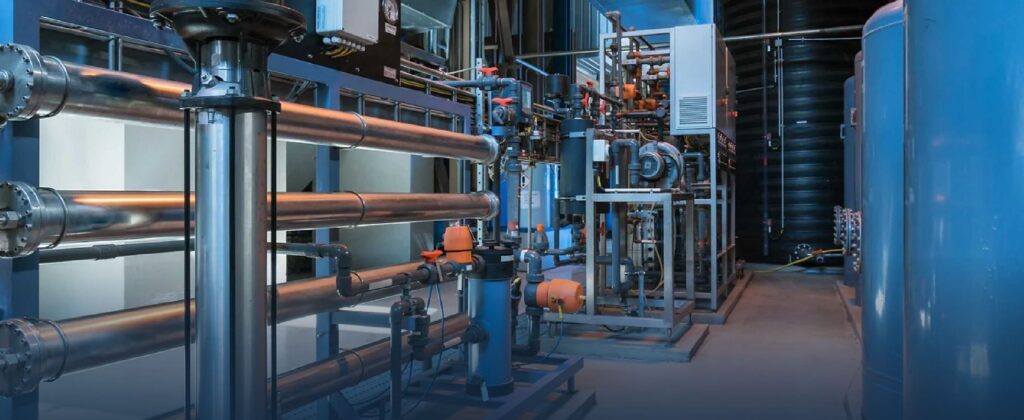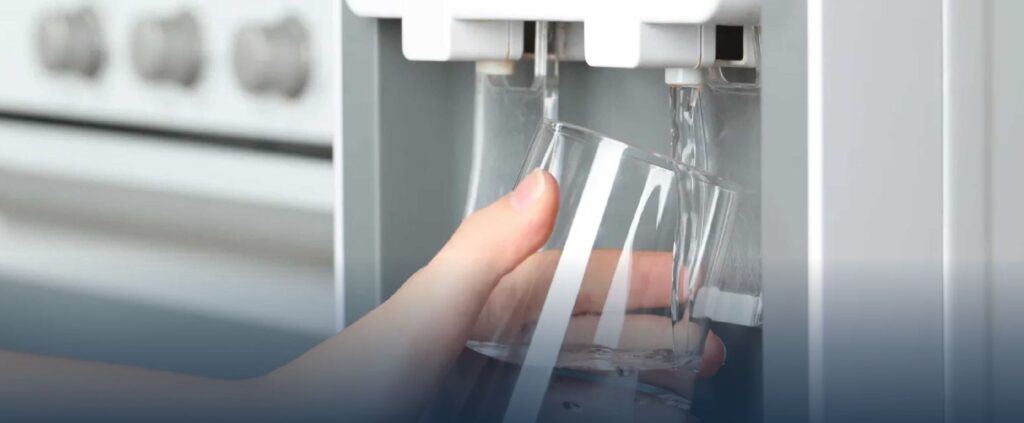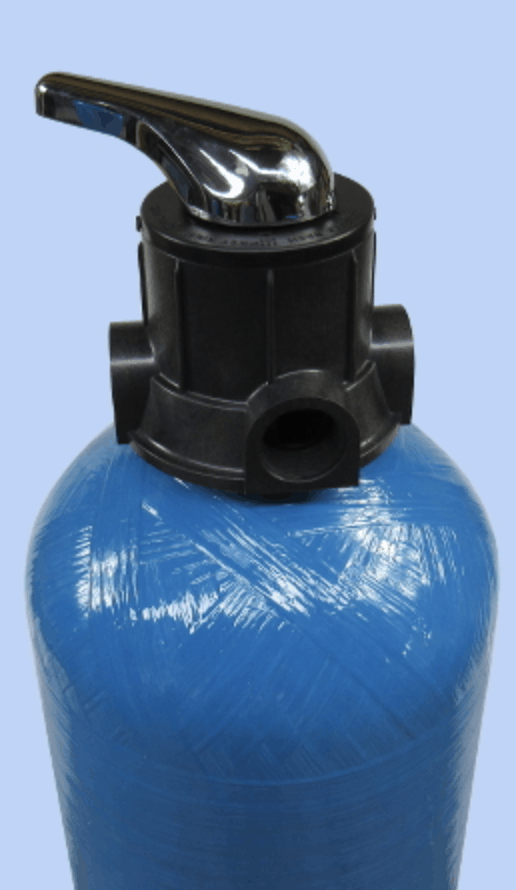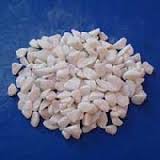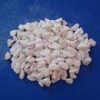Description
Calcite Filter with Manual Backwash Valve
A calcite filter is a type of water treatment system that is designed to neutralize acidic water by raising the pH level. Below is an overview of how the system works and outline the many benefits of using it.
pH and water quality
Excessively high and low pHs can be detrimental for the use of water. High pH causes a bitter taste, water pipes and water-using appliances become encrusted with deposits, and it depresses the effectiveness of the disinfection of chlorine, thereby causing the need for additional chlorine when pH is high. Low-pH water will corrode or dissolve metals and other substances.
pH is one of the most common water quality tests performed. pH indicates the sample’s acidity, but is actually a measurement of the potential activity of hydrogen ions (H+) in the sample. pH measurements run on a scale from 0 to 14, with 7.0 considered neutral. Solutions with a pH below 7.0 are considered acids. Solutions with a pH above 7.0, up to 14.0 are considered bases. All organisms are subject to the amount of acidity of stream water and function best within a given range.
The pH scale is logarithmic, so every one-unit change in pH actually represents a ten-fold change in acidity. In other words, pH 6.0 is ten times more acidic than pH 7.0; pH 5 is one hundred times mores acidic than pH 7.0.

What causes the pH of a stream to vary?
The pH of a body of water is affected by several factors. One of the most important factors is the bedrock and soil composition through which the water moves, both in its bed and as groundwater. Some rock types such as limestone can, to an extent, neutralize the acid while others, such as granite, have virtually no effect on pH.
Another factor which affects the pH is the amount of plant growth and organic material within a body of water. When this material decomposes carbon dioxide is released. The carbon dioxide combines with water to form carbonic acid. Although this is a weak acid, large amounts of it will lower the pH.
A third factor which determines the pH of a body of water is the dumping of chemicals into the water by individuals, industries, and communities. Remember – something as “harmless” as shampoo rinse water is actually a chemical brew and can affect the pH along with other chemical parameters of water. Many industrial processes require water of exact pH readings and thus add chemicals to change the pH to meet their needs. After use, this altered pH water is discharged as an effluent, either directly into a body of water or through the local sewage treatment plant.
A fourth factor which affects pH is the amount of acid precipitation that falls in the watershed. Acid rain is caused by nitrogen oxides (NOx) and sulfur dioxide (SO2) in the air combining with water vapor. These pollutants are primarily from automobile and coal-fired power plant emissions. Acid rain is responsible for many of our first order streams becoming acidic. Serious problems can occur in spring when streams receive a massive acid dose as acidic snows melt.
A fifth factor stems from coal mine drainage. Iron sulfide, a mineral found in and around coal seams, combines with water to form sulfuric acid. This acid, ferrous oxide (known as “yellow boy”), and huge quantities of silt are the major pollutants from coal mining. Combined with the problem of acid rain, the pH of some stream waters can be drastically lowered.
Calcite Filter Medium Description
Calcite is a naturally occurring calcium carbonate media. One of the advantages of Calcite is its self-limiting property. When properly applied, it corrects pH only enough to reach a non-corrosive equilibrium. It does not overcorrect under normal conditions. Upon contact with calcite, acidic waters slowly dissolve the calcium carbonate to raise the pH which reduces potential leaching of copper, lead and other metals found in typical plumbing systems. Periodic backwashing will prevent packing, reclassify the bed and maintain high service rates. Depending on pH, water chemistry and service flow, the Calcite bed will have to be periodically replenished as the Calcite is depleted. As the Calcite’s calcium carbonate neutralises the water, it will increase hardness and a softener may become necessary after the neutralizing filter. Magnesium oxide medium may be added to boost the neutralising capacity of the filter.
If increase of hardness is to be prevented, it may be necessary to increase the pH using Sodium Carbonate(Soda Ash) or Sodium Bicarbonate.
Manual Backwash Filters
Allows the media to be back washed at a time of your choosing.
The valve has three positions:
- Filter Mode
- Backwash Mode
- Rinse mode
Regular backwash and rinse will help remove any suspended solids and reclassify the bed, which otherwise can become compacted.
How a Calcite Filter with Manual Backwash Valve Works
Calcite is a naturally occurring mineral that is used in the water treatment industry to neutralize acidic water. The water flows through a tank filled with calcite, and the mineral raises the pH level of the water by reacting with the acidic minerals in the water.
A manual backwash valve is used to remove any sediment or debris that may have accumulated in the tank over time. The valve is turned on, and the water flows through the tank in the opposite direction, flushing out any sediment or debris and cleaning the calcite bed.
Benefits of Using a Calcite Filter
There are many benefits to using Calcite Filters with Manual Backwash Valves, including:
- Improved Water Quality: Calcite filters are highly effective at neutralizing acidic water, which can cause corrosion in pipes and appliances. By raising the pH level of the water, calcite filters can help to prevent damage to your plumbing and appliances.
- Low Maintenance: Manual backwash valves are easy to use and require very little maintenance. Simply turn the valve on periodically to remove any sediment or debris that may have accumulated in the tank.
- Long Lifespan: These filters are durable and have a long lifespan. With proper maintenance, a filter can last for many years, making it a cost-effective water treatment solution.
- Easy to Install: They are easy to install and can be done by a qualified plumber in a matter of hours.
- Environmentally Friendly: These filters are an environmentally friendly water treatment solution. They do not require electricity or chemicals, making them a sustainable and eco-friendly option for treating your water.
In conclusion, a calcite filter is an effective and cost-efficient way to neutralize acidic water and improve the quality of your water supply. The system is easy to install, low maintenance, and environmentally friendly, making it an ideal choice for homeowners and businesses alike.

